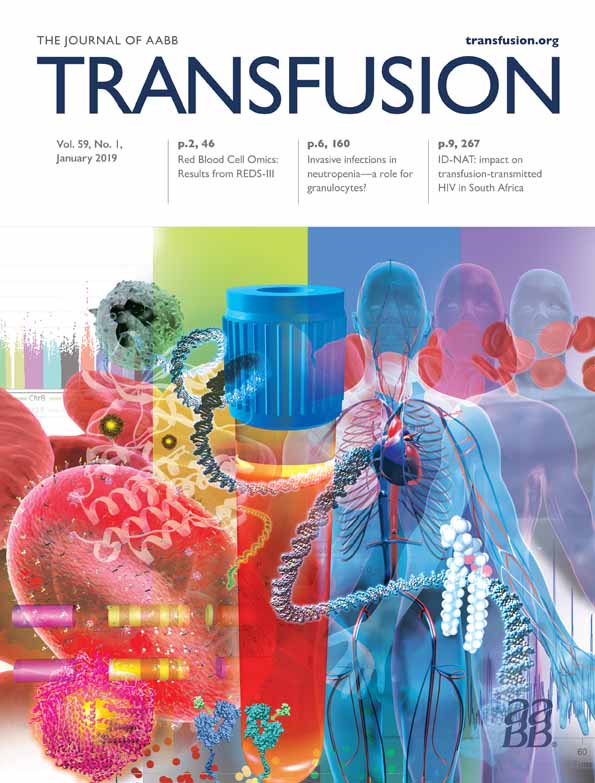Intradonor reproducibility and changes in hemolytic variables during red blood cell storage: results of recall phase of the REDS-III RBC-Omics study
The copyright line for this article was changed on June 13th 2019 after original online publication.
Abstract
BACKGROUND
Genetic determinants may underlie the susceptibility of red blood cells (RBCs) to hemolyze in vivo and during routine storage. This study characterized the reproducibility and dynamics of in vitro hemolysis variables from a subset of the 13,403 blood donors enrolled in the RBC-Omics study.
STUDY DESIGN AND METHODS
RBC-Omics donors with either low or high hemolysis results on 4°C-stored leukoreduced (LR)-RBC samples from enrollment donations stored for 39 to 42 days were recalled 2 to 12 months later to donate LR-RBCs. Samples of stored LR-RBCs from the unit and from transfer bags were evaluated for spontaneous and stress-induced hemolysis at selected storage time points. Intradonor reproducibility of hemolysis variables was evaluated in transfer bags over two donations. Hemolysis data at serial storage time points were generated on LR-RBCs from parent bags and analyzed by site, sex, race/ethnicity, and donation frequency.
RESULTS
A total of 664 donors were successfully recalled. Analysis of intradonor reproducibility revealed that osmotic and oxidative hemolysis demonstrated good and moderate reproducibility (Pearson's r = 0.85 and r = 0.53, respectively), while spontaneous hemolysis reproducibility was poor (r = 0.40). Longitudinal hemolysis in parent bags showed large increases over time in spontaneous (508.6%) and oxidative hemolysis (399.8%) and smaller increases in osmotic (9.4%) and mechanical fragility (3.4%; all p < 0.0001).
CONCLUSION
Spontaneous hemolysis is poorly reproducible in donors over time and may depend on site processing methods, while oxidative and osmotic hemolysis were reproducible in donors and hence could reflect consistent heritable phenotypes attributable to genetic traits. Spontaneous and oxidative hemolysis increased over time of storage, whereas osmotic and mechanical hemolysis remained relatively stable.




